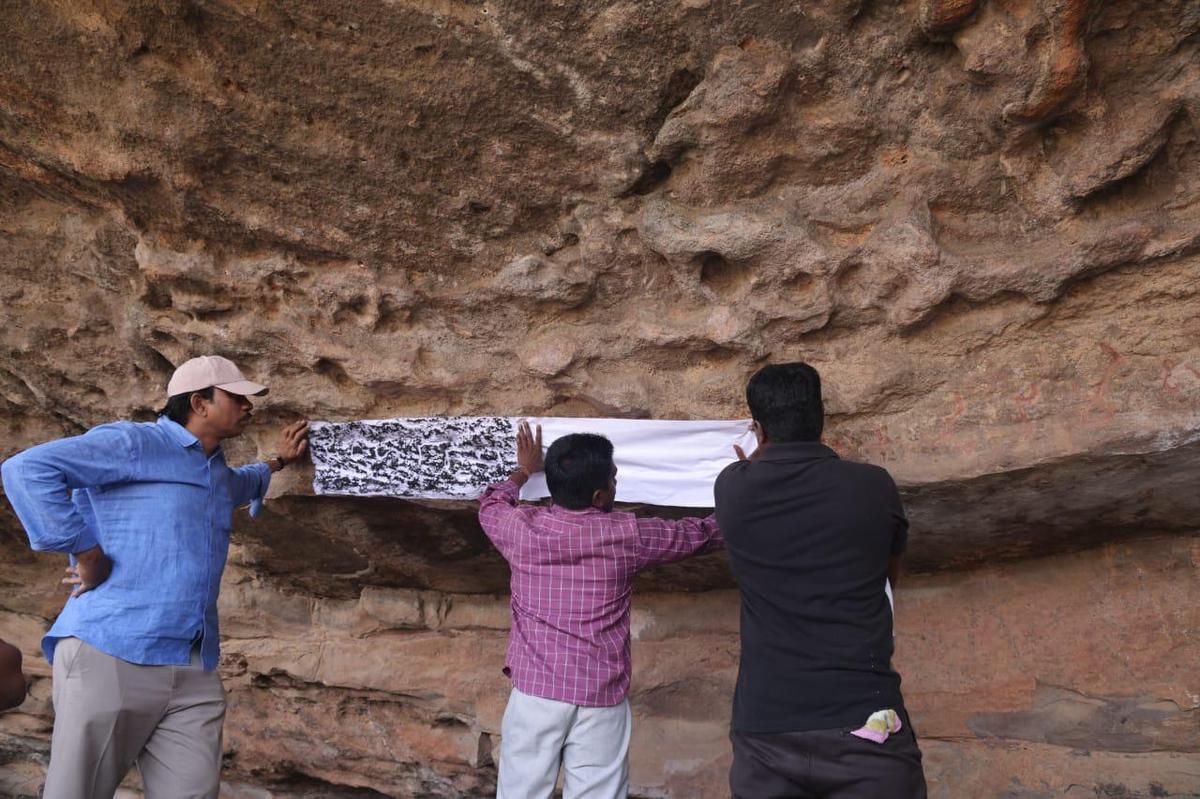- Courses
- GS Full Course 1 Year
- GS Full Course 2 Year
- GS Full Course 3 Year
- GS Full Course Till Selection
- MEP (Mains Enrichment Programme) Data, Facts
- Essay Target – 150+ Marks
- Online Program
- GS Recorded Course
- NCERT- First Ladder
- Polity
- Geography
- Economy
- Ancient, Medieval and Art & Culture AMAC
- Modern India, Post Independence & World History
- Environment
- Governance
- Science & Technology
- International Relations and Internal Security
- Disaster Management
- Ethics
- Current Affairs
- Indian Society and Social Issue
- CSAT
- 5 LAYERED ARJUNA Mentorship
- Public Administration Optional
- ABOUT US
- OUR TOPPERS
- TEST SERIES
- FREE STUDY MATERIAL
- VIDEOS
- CONTACT US
Gundaram Inscriptions Discovered in Telangana Shed New Light on Satavahana Period
Gundaram Inscriptions Discovered in Telangana Shed New Light on Satavahana Period
06-05-2025

Eleven inscriptions found in Gundaram Reserve Forest offer valuable insights into the cultural and political landscape of the early Deccan (1st century BCE – 6th century CE), particularly the Satavahana period.
Key Findings from the Gundaram Inscriptions
- Hāritiputra Inscription:
- Written in early Brahmi script.
- Suggests a political alliance between the Satavahana and Chutu dynasties.
- The Chutus were contemporaries of the Satavahanas.
- Trident & Damaru Inscription:
- Features a trident and damaru symbol.
- Marks the earliest known religious iconography in South India.
- Indicates the early association of political authority with religious symbolism.
About the Satavahana Dynasty (2nd Century BCE to 2nd Century CE)
- Dynasty Overview: The Satavahanas, also known as the Andhras, succeeded the Mauryas in the Deccan region, covering present-day Andhra Pradesh, Telangana, and Maharashtra.
- Prominent Rulers:
- Simuka: Founder of the Satavahana dynasty, who overthrew the Kanva dynasty.
- Gautamiputra Satakarni:
- The dynasty reached its peak under him.
- Known for his military victories against the Shakas (Western Satraps) and for consolidating Satavahana power.
- The Nasik and Nanaghad inscriptions provide crucial details about his reign.
- Hala: Famous for his literary work Gathasaptasati (written in Prakrit).
- Unique Naming Practice: Many Satavahana kings included their mother’s name in their own, unlike other dynasties.
Coins: The Satavahanas were among the first Indian dynasties to issue coins featuring portraits of their rulers.




